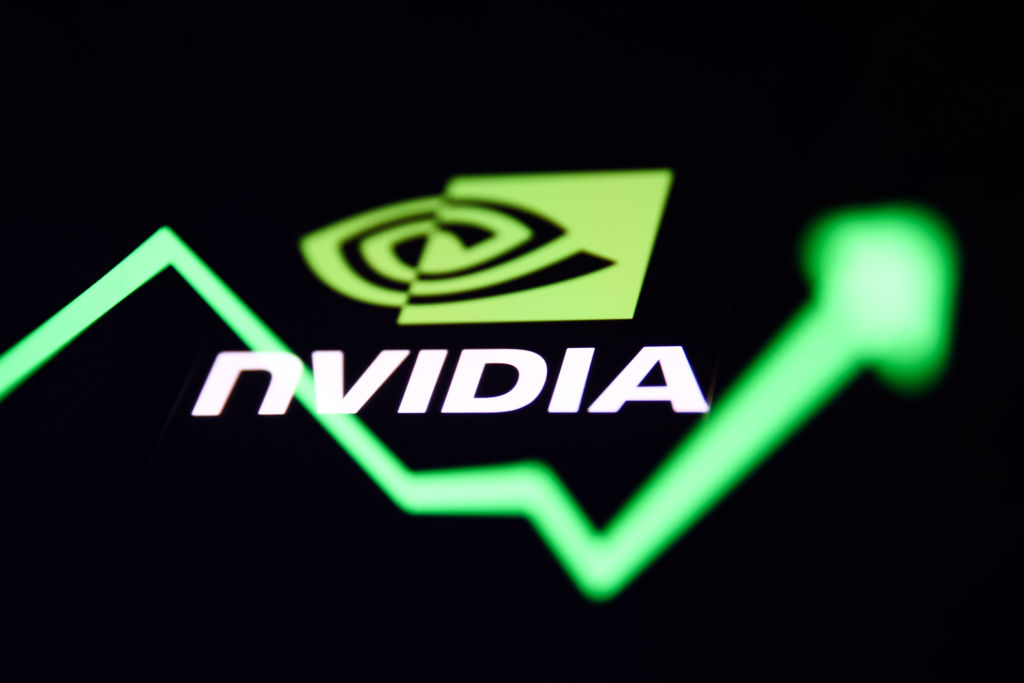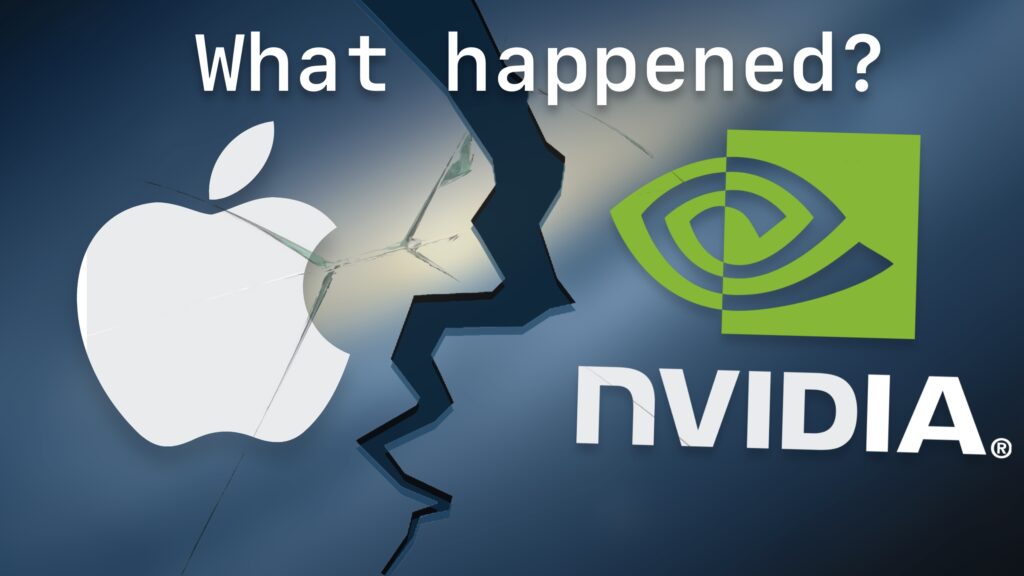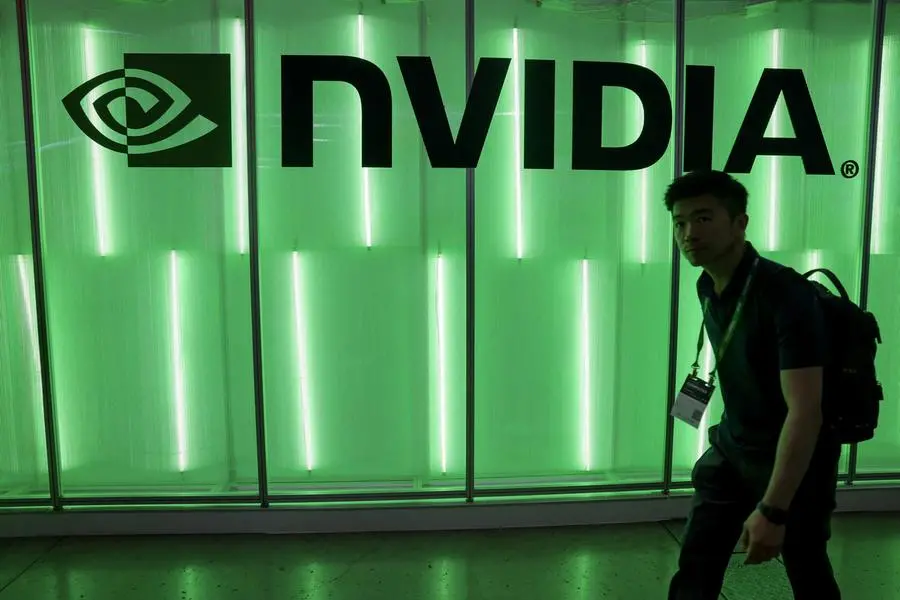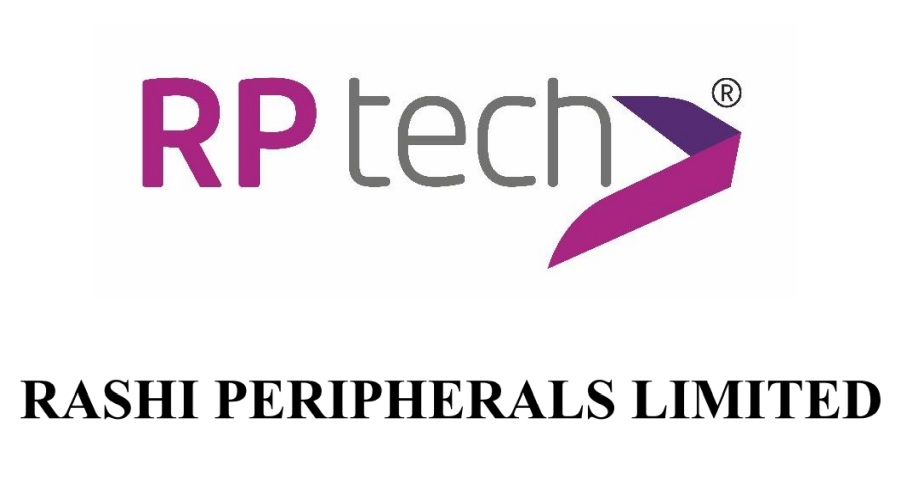Nvidia Overtakes Apple As No. 2 Most Valuable Company; Wall Street’s Record Run Are Increasingly Pumped By Nvidia’s Stunning Gains; For Indian Investors 3 Under The Radar Stocks With Critical Ties To Nvidia’s Supply Chain

Unless you’ve been completely out of touch with the investing world, you’re likely aware of Nvidia‘s incredible performance in recent months.
Nvidia soared to new record heights on Wednesday, surpassing the $3 trillion valuation mark and surpassing Apple to claim the title of the world’s second most valuable company, driven by its prowess in artificial intelligence chipmaking.
The company is gearing up for a ten-for-one stock split scheduled for June 7, a move that could make it more attractive to individual investors.
This surge in market value above Apple signifies a significant shift in Silicon Valley’s landscape, traditionally dominated by the iPhone creator since 2007.
This remarkable achievement is set to become even more exciting in the coming year if current trends continue.
The results clearly demonstrate the success of this strategy and the results speak for themselves in that regard.
 Nvidia’s stock rose by 5.2% to close the day at $1,224.40, pushing its market capitalization to $3.012 trillion, while Apple’s valuation settled at $3.003 trillion following a 0.8% increase in its stock.
Nvidia’s stock rose by 5.2% to close the day at $1,224.40, pushing its market capitalization to $3.012 trillion, while Apple’s valuation settled at $3.003 trillion following a 0.8% increase in its stock.
Despite Nvidia’s monumental gains, Microsoft, headquartered in Redmond, Washington, retained its position as the world’s most valuable company, standing at $3.15 trillion after experiencing a 1.9% climb in its shares.
Jake Dollarhide, CEO of Longbow Asset Management, noted, “Nvidia is profiting from AI at present, while companies like Apple and Meta are investing heavily in AI.”
He suggested that Nvidia’s ascent to surpass Microsoft might be inevitable, fueled by a surge in retail investment banking on its seemingly unstoppable trajectory.
In 2024 alone, Nvidia’s stock has surged by 147%, driven by robust demand for its cutting-edge processors, which are in high demand as tech giants like Microsoft, Meta Platforms, and Alphabet vie for dominance in AI computing.
On Wednesday, the company’s market capitalization increased by nearly $150 billion, exceeding AT&T’s total value. Optimism surrounding AI buoyed chip stocks broadly, with the PHLX chip index skyrocketing by 4.5%.
Super Micro Computer, a provider of AI-optimized servers utilizing Nvidia chips, saw its stock climb by 4%.
Nvidia’s CEO, Jensen Huang, gained extensive media coverage in Taiwan and was swarmed by attendees at the Computex tech trade fair in Taipei, his birthplace, before relocating to the United States.
 Nvidia VS Apple
Nvidia VS Apple
While Nvidia basks in the glow of AI fervor on Wall Street, Apple is struggling with sluggish iPhone demand and fierce competition in China, the world’s largest smartphone market.
In contrast to Nvidia’s stellar gains, Apple faces challenges in maintaining its competitive edge.
Analysts’ projections for Nvidia’s future earnings have outpaced its impressive stock performance.
According to LSEG data, Nvidia is currently trading at 39 times expected earnings, marking a decrease in valuation compared to a year ago when it traded at over 70 times expected earnings.
Driving Wall Street
Nvidia’s remarkable ascent is increasingly driving Wall Street’s record-breaking rally and has raised concerns about the market’s dependence on a handful of influential companies.
Data from S&P Dow Jones Indices reveals that approximately 60% of the S&P 500’s total return of over 12% this year is attributed to five companies with significant weightings in the index: Nvidia, Microsoft, Meta Platforms, Alphabet, and Amazon.com.
Nvidia’s meteoric rise this year, culminating in its recent milestone as the world’s second-most valuable company, has contributed substantially to the index’s gains.
As the share prices of these companies soar, their influence over the broader market index expands.
 The collective weight of the top four stocks – Microsoft, Apple, Nvidia, and Alphabet – reached nearly 24% of the S&P 500 by the end of May, the highest level in 60 years, as reported by Bianco Research.
The collective weight of the top four stocks – Microsoft, Apple, Nvidia, and Alphabet – reached nearly 24% of the S&P 500 by the end of May, the highest level in 60 years, as reported by Bianco Research.
While many investors acknowledge the market dominance of these tech titans, concerns linger about the potential risks associated with such concentrated gains.
Angelo Kourkafas, senior investment strategist at Edward Jones, highlights the vulnerability posed by a scenario where these powerhouse companies falter without sufficient support from the broader market.
Howard Silverblatt, senior index analyst at S&P Dow Jones Indices, notes that the top ten stocks in the S&P 500 collectively accounted for 34.1% of the index’s weight at the end of May, marking the highest month-end weight ever recorded.
Concerns regarding market concentration have surfaced repeatedly in recent years.
The S&P 500’s 24% gain in 2023, driven by investors’ preference for larger companies less vulnerable to economic fluctuations during recession worries, was primarily propelled by significant increases from a group of mega-cap tech and growth stocks known as the “Magnificent Seven.”
While these stocks soared, many other segments of the market remained lackluster, even though a recession did not materialize.
Signs of market broadening appeared in the first quarter of 2024, with the financials, energy, and industrials sectors outperforming the S&P 500. However, these sectors have declined in the second quarter, even as the broader index continued to rise.
The equal-weight S&P 500, which serves as a proxy for the average stock in the index, has reduced its earlier gains and is up just 4.5% this year, compared to a 12% gain for the S&P 500.
“We were all excited about the broadening out of the recovery,” said Jack Manley, global market strategist at J.P. Morgan Asset Management. “It appears to have stalled out, at least in the first half or so of the year.”
 The Fears
The Fears
Analysts point to several reasons for the market’s narrowing, including the dominance of first-quarter earnings from mega-cap tech companies and the enthusiasm for AI-benefiting firms.
Emerging concerns about an economic slowdown, as reflected in recent data such as a weaker U.S. manufacturing report, may also be contributing factors.
Meanwhile, Nvidia has continued its upward trajectory. Driven by its position as the leading AI chipmaker, Nvidia’s market value surpassed $3 trillion on Wednesday, moving ahead of Apple in market capitalization and trailing only Microsoft.
Since its blockbuster earnings report on May 22, Nvidia’s stock has surged by 29%, while the S&P 500 has only increased by 0.9% in the same period.
“Nvidia itself was supporting the tape,” said Michael O’Rourke, chief market strategist at JonesTrading. “That’s a risk because if a correction emerges in that name, you’re going to feel it in the market.”
Some investors believe this concentration of gains reflects the economic strength of these companies and is not inherently a cause for alarm.
Peter Tuz, president of Chase Investment Counsel, explained, “The megacaps are outperforming because the results and outlook are strong,” though he acknowledged that gains from a broader range of stocks are preferable as they indicate wider economic strength.
Others remain optimistic that the market will broaden in the coming months, driven by improving earnings from the rest of the S&P 500.
According to Tajinder Dhillon, senior research analyst at LSEG, the “Magnificent Seven” earnings are expected to rise about 27% in 2024, compared to a 7.4% increase for the S&P 500 excluding those seven, with the gap expected to shrink as the year progresses.
“That earnings outperformance gap will start to narrow,” said Angelo Kourkafas, senior investment strategist at Edward Jones. “Investors shouldn’t give up on that theme of broadening leadership this year.”
 Indian Investors
Indian Investors
In India, the US-based chipmaker NVIDIA forged significant partnerships in September 2023 with the country’s largest conglomerates, Reliance Industries and Tata Group.
Additionally, Infosys collaborated with NVIDIA in the same month to develop generative AI solutions aimed at boosting productivity.
L&T Technology also joined forces with NVIDIA to enhance medical imaging through AI.
As the AI megatrend gains momentum, more companies are jumping on the bandwagon.
For investors seeking to capitalize on the AI rally, here are three under-the-radar stocks connected to NVIDIA, whether by supplying components, licensing NVIDIA products, or forming key partnerships.
 1. Rashi Peripherals
1. Rashi Peripherals
Rashi Peripherals is one of the top five IT distributors in India, involved in product distribution and after-sales services across various categories, including personal computing, mobility, enterprise, and embedded solutions.
Recently, the company was listed on the stock exchanges, raising funds through the SME IPO route.
In its draft red herring prospectus, Rashi Peripherals identifies NVIDIA as one of its clients. The company is the primary importer and distributor of NVIDIA’s branded RTX cards, as well as older GTX cards.
Apart from NVIDIA, Rashi Peripherals has established partnerships with prominent brands such as Lenovo, Asus, Hewlett-Packard, Sandisk, and Western Digital. The company has also catered to Samsung and LG in the past.
Regarding its financials, Rashi Peripherals has experienced margin pressure due to competition from established players in the product distribution business.
However, the company anticipates improving its margins moving forward and has reduced its debt following the IPO.
Rashi Peripherals has consistently paid dividends to its shareholders and boasts high double-digit return ratios.
Looking ahead, the company’s ongoing efforts to expand its footprint and introduce new products are expected to drive revenue and net profit growth in the medium term.
 2. Esconet Technologies
2. Esconet Technologies
The second stock on this list is Esconet Technologies. The company provides high-end supercomputing solutions and data center facilities, including storage servers, network security, virtualization, and data protection.
How is it related to Nvidia you ask?
In collaboration with the US-based chipmaker, Esconet introduced its own brand, HexaData, specializing in high-performance servers, workstations, and storage systems.
It has integrated the latest NVIDIA GPGPU technology to create supercomputers capable of handling the most technical and data-intensive tasks.
As expected, investors are eager to invest in any stocks even remotely connected to NVIDIA. This enthusiasm was evident as Esconet’s public offering received a strong response, being subscribed over 505 times!
As a result, the stock made a bumper debut, listing at Rs 290 on the NSE SME, a 245% premium over the issue price. Currently, the stock trades at Rs 249 per share.
The Indian government is considering several projects to open data centers in various states. The UP data center policy has laid out a target investment of Rs 200 billion for the deployment of data centers and since Esconet is involved in data center solutions, it stands to benefit from this initiative.
Moreover, Esconet is also involved in other high-growth sectors, including defense and manufacturing.
Financially, the company has posted phenomenal growth in the past two years.
The company’s revenue has surged due to its competitive advantage and an increase in government orders. Currently, around 30% of its revenue comes from government contracts. Some of its clients include the Ministry of Defence, Engineers India, Bharat Electronics, ONGC, Siemens, and MapMyIndia.
From the net proceeds of the IPO, the company plans to invest more in its wholly-owned subsidiary, Zeacloud Services.
Going forward, Esconet’s long-term relationships with clients and repeat orders are expected to drive its growth.
 3. Netweb Technologies
3. Netweb Technologies
The company designs, manufactures, and deploys high-computing solutions (HCS) that include proprietary middleware solutions, end-user utilities, and precompiled application stacks.
Netweb announced its collaboration with NVIDIA back in November 2023.
On November 27, 2023, Netweb Technologies informed the exchanges that it has partnered with NVIDIA to unlock the potential of AI and high-performance computing.
Netweb is now a manufacturing partner for the NVIDIA Grace CPU Superchip and GH200 Grace Hopper Superchip MGX server designs.
Netweb will build and produce more than ten server variations under its Tyrone range of AI systems, which are used in a wide range of AI, high-performance computing, and supercomputing applications.
The commercial launch of these products in partnership with Nvidia is expected by June 2024.
Commenting on the partnership, the company’s MD said this collaboration will significantly boost the Make-in-India initiative, bringing locally manufactured cutting-edge technologies up to global standards.
Earlier, in July 2023, Netweb Technologies made a stellar debut, listing at Rs 947 apiece, a massive 89% premium over its IPO offer price of Rs 500.
Currently, the stock trades at Rs 1,675 per share. At the time of its IPO, the company received an overall subscription of over 90 times, indicating strong investor optimism.
However, shortly after listing, the company posted a marginal drop in its topline and bottomline, leading to a decline in its share price.
Netweb bounced back with stellar results in the second quarter of FY24, with total revenues more than doubling to Rs 1.5 billion on a YoY basis and net profit spiking 66% to Rs 151 million.
This was followed by an even better third quarter, where the company posted its highest-ever quarterly revenue and profits.
In the most recent quarter, Netweb reduced its debt and improved its cash conversion cycle to 77 days.
Additionally, it received a PLI claim of Rs 39 million. In its earnings presentation, the company stated it expects to finish FY24 on a strong footing and has a robust business pipeline of over Rs 32 billion.
Over the past three years, the company’s sales have more than tripled, while net profit has risen over four times.




